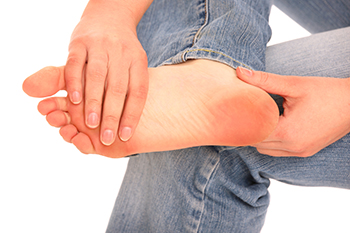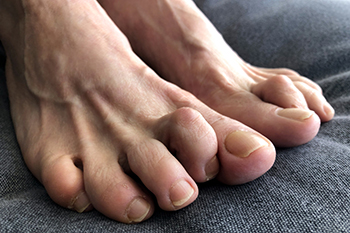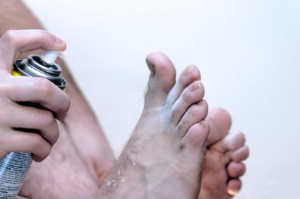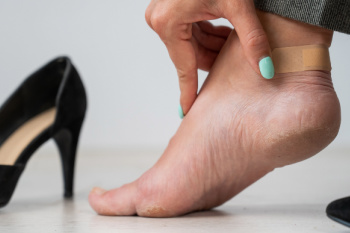
Foot pain can disrupt daily activities and impact overall well-being. Understanding common causes can help in managing and preventing discomfort. One frequent culprit is plantar fasciitis, which results from inflammation of the tissue along the bottom of the foot, often due to overuse or poor arch support. Another common source of foot pain is bunions, characterized by a bony bump at the base of the big toe, often made worse by tight or ill-fitting shoes. Arthritis, including osteoarthritis and rheumatoid arthritis, can also lead to pain and stiffness in the joints of the feet. Additionally, conditions like flat feet or high arches can contribute to foot pain by causing uneven weight distribution. A podiatrist can identify and help you manage these issues. Sometimes simple preventive measures like wearing well-fitting shoes, using orthotic inserts, and stretching regularly can alleviate or even prevent your discomfort. If you have foot pain, it is suggested you consult a podiatrist for appropriate diagnosis and treatment.
Foot Pain
Foot pain can be extremely painful and debilitating. If you have a foot pain, consult with one of our podiatrists from Comprehensive Foot & Ankle Center of South Jersey. Our doctors will assess your condition and provide you with quality foot and ankle treatment.
Causes
Foot pain is a very broad condition that could be caused by one or more ailments. The most common include:
- Bunions
- Hammertoes
- Plantar Fasciitis
- Bone Spurs
- Corns
- Tarsal Tunnel Syndrome
- Ingrown Toenails
- Arthritis (such as Gout, Rheumatoid, and Osteoarthritis)
- Flat Feet
- Injury (from stress fractures, broken toe, foot, ankle, Achilles tendon ruptures, and sprains)
- And more
Diagnosis
To figure out the cause of foot pain, podiatrists utilize several different methods. This can range from simple visual inspections and sensation tests to X-rays and MRI scans. Prior medical history, family medical history, and any recent physical traumatic events will all be taken into consideration for a proper diagnosis.
Treatment
Treatment depends upon the cause of the foot pain. Whether it is resting, staying off the foot, or having surgery; podiatrists have a number of treatment options available for foot pain.
If you have any questions, please feel free to contact our offices located in Cherry Hill, Voorhees, Atco, and Turnersville, NJ . We offer the newest diagnostic and treatment technologies for all your foot care needs.

 Hammertoe surgery
Hammertoe surgery


